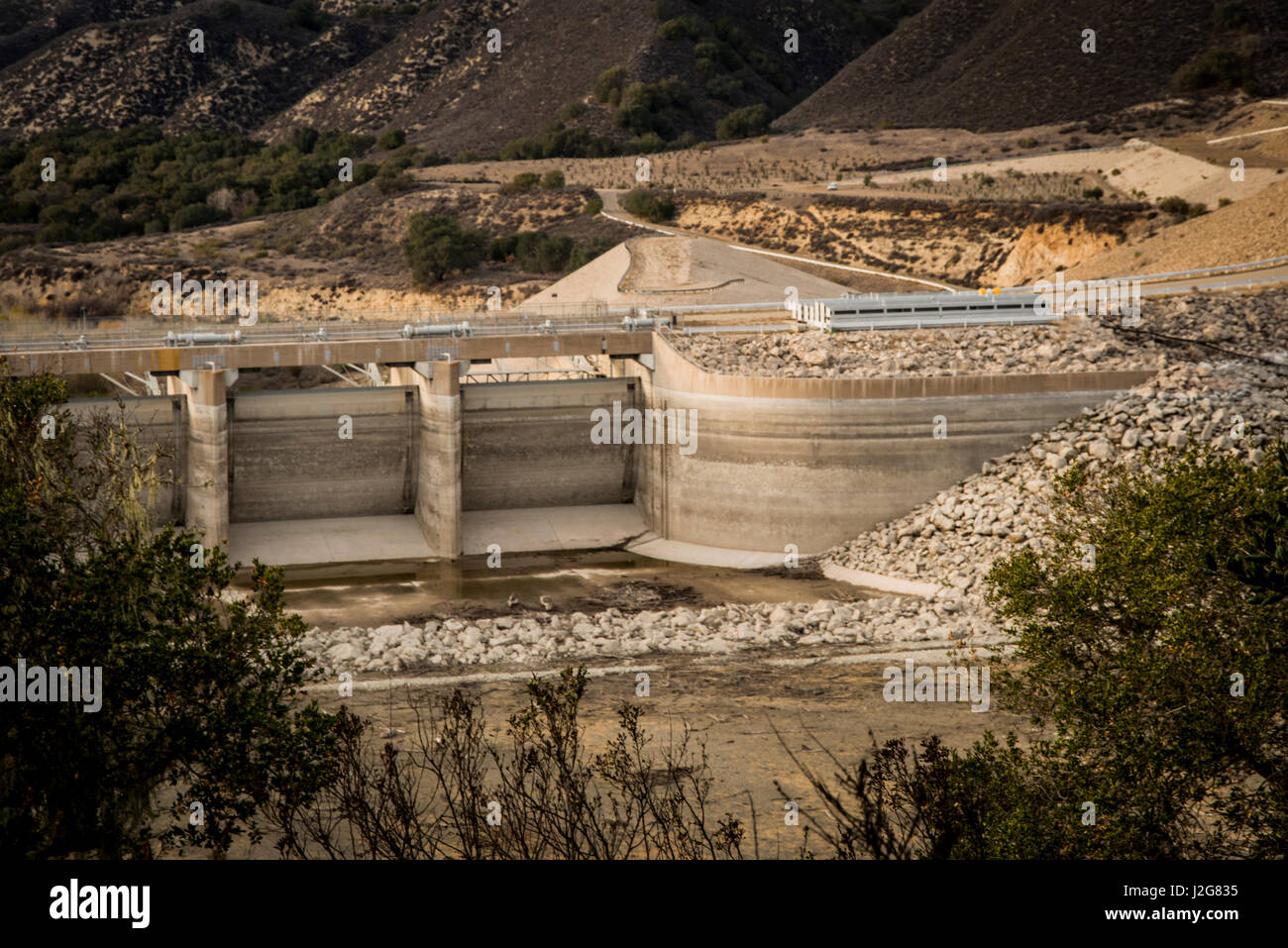Santa Ynez Reservoir Crisis: Is Your Water Supply at Risk?
The news of the crisis at the Santa Ynez Reservoir has sent shockwaves throughout the community, leaving many wondering if their water supply is at risk. As an expert in the field of water management, I have been following the developments closely, and in this article, I will provide an in-depth analysis of the crisis and its potential impact on the region's water supply.
The Santa Ynez Reservoir, located in Santa Barbara County, California, is a vital source of water for the surrounding communities. However, in recent years, the reservoir has been facing unprecedented challenges due to a combination of factors, including drought, over-allocation, and aging infrastructure. The crisis has reached a boiling point, with some experts warning that the reservoir may not have enough water to meet the needs of the region during the upcoming winter months.
As the climate continues to change, the demand for water is expected to increase, putting additional pressure on the already strained water supply. With the potential for more frequent and severe droughts, it is essential that we take immediate action to address the crisis and ensure that our water supply is protected.
Causes of the Crisis
The crisis at the Santa Ynez Reservoir is the result of a complex interplay of factors, including:
- Over-allocation of water resources
- Aging infrastructure
- Drought and changing climate
- Increasing population growth
Factors Contributing to Over-Allocation
Over-allocation of water resources is a significant contributor to the crisis at the Santa Ynez Reservoir. The reservoir is allocated to meet the needs of several water users, including municipalities, agriculture, and industry. However, the demand for water has outpaced the available supply, leading to over-allocation and putting pressure on the reservoir.
Aging Infrastructure
The Santa Ynez Reservoir is also facing challenges due to aging infrastructure. The reservoir's pipes and infrastructure are over 50 years old, and many are in need of repair or replacement. This can lead to leaks, water loss, and decreased water quality, further exacerbating the crisis.
Impact of Drought and Changing Climate
Drought and changing climate are also significant contributors to the crisis at the Santa Ynez Reservoir. The region has experienced several droughts in recent years, which have further reduced the reservoir's water levels. Additionally, climate change is expected to continue to exacerbate drought conditions, putting additional pressure on the reservoir.
What Can Be Done to Address the Crisis?
There are several steps that can be taken to address the crisis at the Santa Ynez Reservoir, including:
- Increasing water conservation efforts
- Implementing water-saving technologies
- Investing in water infrastructure
- Promoting drought-resilient agriculture
Increasing Water Conservation Efforts
Increasing water conservation efforts is essential to addressing the crisis at the Santa Ynez Reservoir. This can include promoting water-saving technologies, such as low-flow appliances and drought-resistant landscaping.
Water-Saving Technologies
Some of the water-saving technologies that can be implemented to address the crisis include:
- Low-flow appliances
- Drought-resistant landscaping
- Rainwater harvesting systems
- Greywater reuse systems
Implementing Water-Saving Technologies
Implementing water-saving technologies is a critical step in addressing the crisis at the Santa Ynez Reservoir. This can include installing low-flow appliances, promoting drought-resistant landscaping, and implementing rainwater harvesting systems.
Benefits of Water-Saving Technologies
The benefits of water-saving technologies are numerous, including:
- Reduced water consumption
- Decreased water bills
- Improved water quality
- Increased water security
Investing in Water Infrastructure
Investing in water infrastructure is essential to addressing the crisis at the Santa Ynez Reservoir. This can include repairing or replacing aging pipes and infrastructure.
Benefits of Investing in Water Infrastructure
The benefits of investing in water infrastructure are numerous, including:
- Reduced water loss
- Improved water quality
- Increased water supply
- Enhanced water security
Promoting Drought-Resilient Agriculture
Promoting drought-resilient agriculture is a critical step in addressing the crisis at the Santa Ynez Reservoir. This can include implementing drought-resistant crops, promoting water-efficient irrigation systems, and promoting agroforestry practices.
Benefits of Promoting Drought-Resilient Agriculture
The benefits of promoting drought-resilient agriculture are numerous, including:
- Improved crop yields
- Reduced water consumption
- Increased water security
- Enhanced drought resilience
Consequences of the Crisis
The consequences of the crisis at the Santa Ynez Reservoir are far-reaching and significant. Some of the potential consequences include:
- Reduced water supply
- Increased water prices
- Economic impacts
- Social impacts
Reduced Water Supply
A reduced water supply is a direct consequence of the crisis at the Santa Ynez Reservoir. This can include reduced water levels, decreased water flows, and reduced water availability.
Economic Impacts
The economic impacts of the crisis at the Santa Ynez Reservoir are significant. Some of the potential economic impacts include:
- Increased water costs
- Reduced economic growth
- Job losses
- Business closures
Social Impacts
The social impacts of the crisis at the Santa Ynez Reservoir are also significant. Some of the potential social impacts include:
- Reduced access to clean water
- Increased water scarcity
- Reduced quality of life
- Social unrest
What Can Be Done to Mitigate the Consequences?
There are several steps that can be taken to mitigate the consequences of the crisis at the Santa Ynez Reservoir, including:
- Implementing water-saving measures
- Investing in water infrastructure
- Prom
Sabrina Carpenter Height Ft
Rebbie Jackson
Google Places Local Rank Tracker
Article Recommendations
- Understandable Have A Niceay
- Who Isavid Muir Married To
- Mel Tiangco
- Who Is H L Ne Joy Partner
- Mikayla Campinos
- Imoo Jung Relationships
- Jackie Young Husband
- Meg Nuttd
- Marcus Rosner
- Damon Imani



